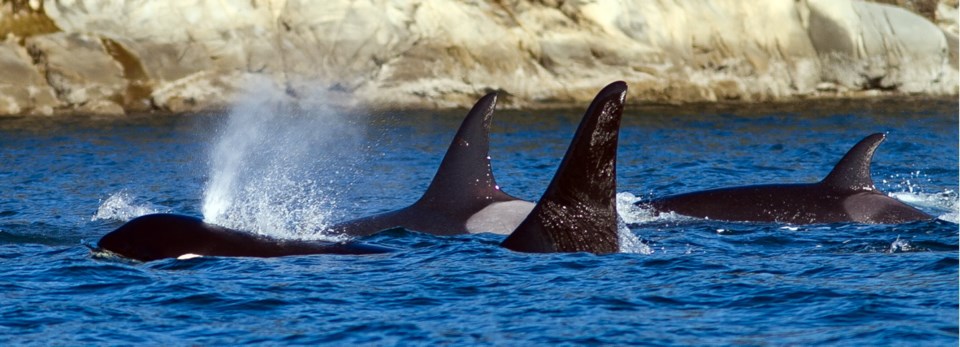Two female killer whales from the endangered southern residents have been confirmed dead by the Center for Whale Research.
The deaths of 52-year-old L2, who had not been seen since last December, and 57-year-old L26, who had not been seen since March, when she was in poor condition, brings the number of whales in the three pods to 82 animals, the lowest in more than a decade.
It is gloomy news, especially as no calves have yet been born this year, said Ken Balcomb, the executive director of the centre in Friday Harbor, Wash.
“It’s not looking great in the reproduction department,” he said. Usually, at least a couple of calves have been born by this time of the year.
The deaths are not unusual, but there is little room for population reductions, Balcomb said.
“We have estimated that females live an average of 54 years and males for 29 to 30 years, so both of these are in the ballpark and both are past their baby-rearing years, but this wipes out two matrilines,” he said.
There is also concern about 20-year-old L88, the only surviving son of L2, who is left without a mother or grandmother.
Adult male orcas appear to need a female to look after them, Balcomb said. “The males are a bit helpless.”
Balcomb would like to see the population grow to about 120.
Historically, before whaling and the capture of orcas for aquariums, there were about 200 southern residents.
The population shrank to 67 animals in 1971 after live captures and deaths during the captures removed almost 50 whales. By 2003, the numbers had rebounded to 83. They have hovered in the mid-80s since.
Studies in Canada and the U.S. have identified lack of chinook salmon — the preferred food of resident orcas — noise and pollution as major threats to the whales.
“I have been concerned for a number of years that, unless we solve the fish problem, we are in trouble,” Balcomb said.
“Sooner or later, these politicians have to bite the bullet and get rid of fish farms because they are killing wild fish. Your country and the province have to take some really bold steps.”
There are 26 whales in J Pod, 19 in K Pod and 37 in L Pod.
The three pods spend much of their time around Juan de Fuca Strait and off the west coast of Vancouver Island.



